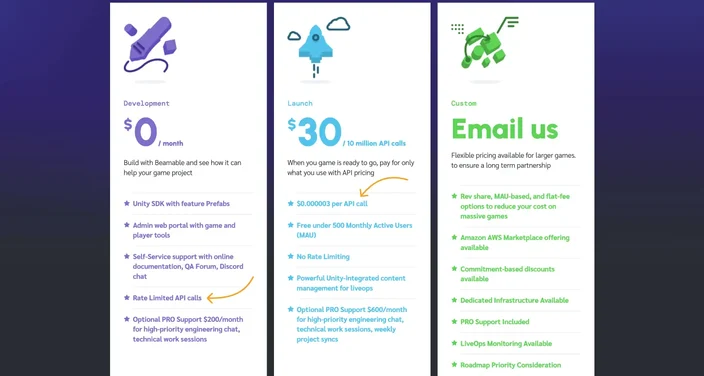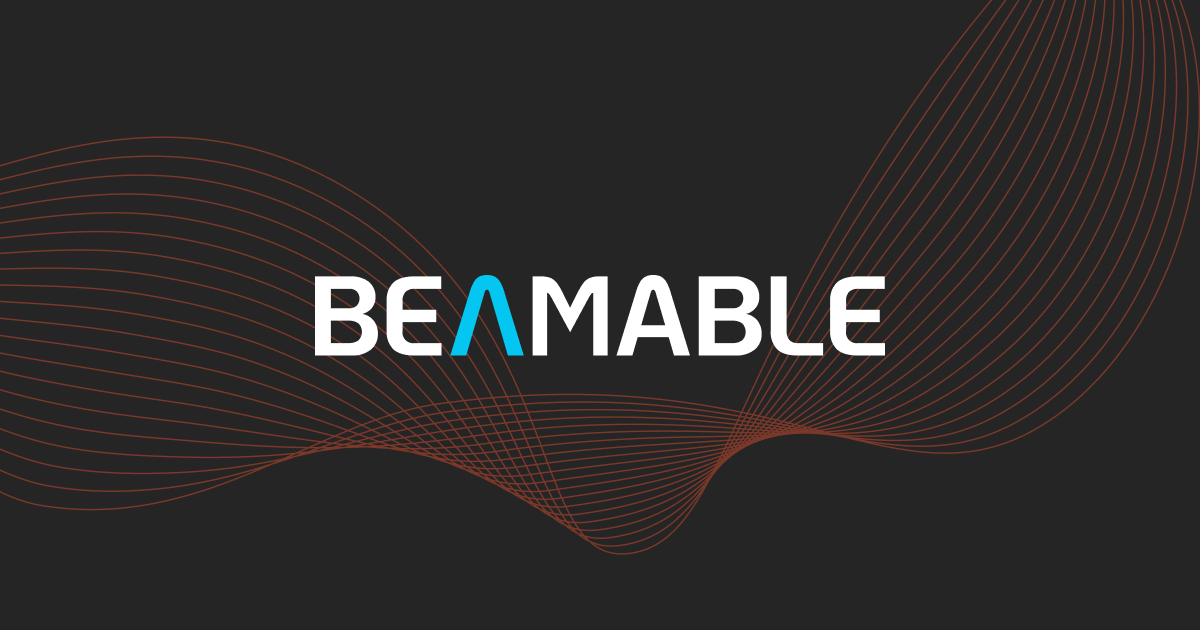Overview
About
Beamable provides intuitive game infrastructure solutions to video game developers, including live social, commerce, and content management features.
Challenge
Beamable wanted to allocate their total multi-tenant cloud infrastructure costs by customer — and then, by game per customer, and service per game per customer.
Solution
Implemented CloudZero, developing custom dimensions to evaluate and label per-customer infrastructure usage.
Outcomes
- Created granular custom IDs for decoding cloud spend
- Developed accurate cost per game per customer statistics
- Evaluated pricing models and indicated further steps for using cloud spend data to inform business decisions
The Challenge
Of the 7.9 billion people in the world, about 2.95 billion play video games (Statista). That number had been rising for years, and the pandemic only fueled it: By 2021, 63 million more Americans, across age groups, said they played video games than in pre-pandemic times.
For a company like Beamable, which helps game builders simplify the video game development (and monetization) process, those numbers mean a lot of opportunity — if they can develop sufficiently efficient cloud infrastructure.
Founded in 2010, Beamable offers developers drag-and-drop tools that make it easy to add live social, commerce, and content management features to their games. Beamable provides the infrastructure, allowing game builders to focus on creativity — developers’ strength, and the defining factor of successful games. In the words of Beamable customer Joe Bonar, president of mobile game developer Truly Social Games, “We’d rather invest our time and money in creating a great game than reinventing live game technology.”
Beamable uses AWS for all their cloud needs. Until recently, Beamable had managed their cloud spend only at a general account level, limiting their toolbox to AWS’s native Cost Explorer function.
While AWS’ toolset is great for handling the basics, the more Beamable grew, the more limited that tool became.
“We were looking at bills at a high level,” said Beamable Co-founder and COO Trapper Markelz in an interview. “We wanted more granularity into what was actually happening on a customer level.”
Beamable’s system delivers services via multi-tenant infrastructure. Rather than simply seeing a total bill for that infrastructure, they wanted to get a better sense of how much each tenant cost. If possible, they wanted to dive even deeper, understanding the cost of each developer’s various games, as well as specific services within those games.
With this information, they could get a more refined sense of their margins — whether their pricing models were accurate, whether certain types of services/games/customers tended to cost more, whether (and how) to make different business decisions based on previously unavailable data.
Why hadn’t they tried to develop telemetry tools for this on their own? “There’s a certain level of analytics sophistication we could probably spend a bunch of time on,” Markelz said. “But at the end of the day, we’re not a business analytics company, we’re a game infrastructure company.”
Just as Beamable took the infrastructure burden off game developers, they needed a tool to handle their analytics burden, allowing them to focus on their strength: delivering intuitive game infrastructure tools to their customers.
The Solution
Beamable reached out to CloudZero, whose cloud cost intelligence tools let digital-native businesses turn cloud spend data from an unknown into an asset.
Because Beamable prices according to API calls, they wanted to determine how many API calls to attribute to individual customers, games, and services. They could then correlate that data with total infrastructure costs, calculating the per-customer cost of their multi-tenant infrastructure.

But the sheer number of API calls alone wasn’t enough. Not all API calls are alike, and so Beamable needed an even more granular dimension by which to isolate per-customer costs. So, Beamable collaborated with CloudZero to develop a specific dimension: amount of time per API call per customer, measured in milliseconds.
CloudZero’s software began counting the milliseconds of every query request. Over time, this allowed Beamable to begin breaking total costs into per-customer costs.
The Results
Developed granular IDs for decoding cloud spend
Due to Beamable’s ideal objective — clarify cost per service per game per customer — CloudZero developed custom dimensions to reflect each of these metrics. That meant generating specific IDs for every level of this process. It started with customer IDs, which then divided into specific realm IDs (realm equals game). Realm IDs divided further into specific service IDs.
Clarified per-customer costs
These IDs let Beamable break their cloud spend into units. CloudZero’s telemetry tools turned the IDs into the building blocks of unit economics.
Beamable’s API-based evaluation system allocated portions of their total multi-tenant infrastructure costs to individual customers. Using this information, they could evaluate the accuracy of their pricing, make infrastructural changes, and, at the end of the month, evaluate the effectiveness of any adjustments.
“CloudZero lets us look at all the changes we’ve made and understand whether margin has improved,” said Markelz.
Indicated further ways for cloud cost intelligence to inform business decisions
As an additional challenge, a certain level of Beamable’s cloud infrastructure has nothing to do with customer usage, but is simply “the base requirement we need to exist as a company,” in Markelz’s words. Beamable needs a base level of infrastructure for their services to exist, requiring a base level of spend, and variable customer-usage-based spend goes on top of that.
“From a pure accounting perspective,” Markelz explained, “we only want to allocate cost of infrastructure to customers that’s actually driven by customers, not what we need to run the systems.”
Having now broken their multi-tenant infrastructure costs into accurate per-customer dimensions, Beamable plans to focus on further segmentation, which will give them an even better sense of how to adapt their infrastructural and pricing decisions going forward.
“I think of CloudZero as really cost transparency software,” says Markelz, “It allows us to just put together cost and business definitions that we need. If someone told me they wanted to understand a lot more detail about their infrastructure and the cost behind it – I’d point them to CloudZero.”


